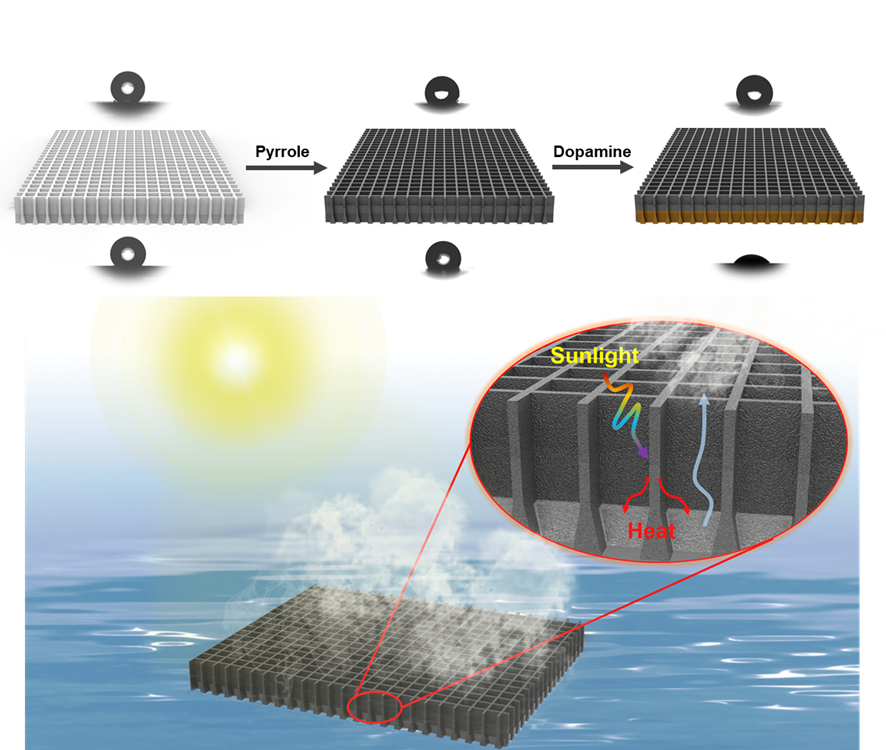Congratulations to Hao-Hao Yu and Lin-Jiong Yan for their recent publication on Research
Solar-driven desalination has been considered as a promising technology for producing clean water through an abundant and pollution-free energy source. It is a critical challenge to reasonably design the porous morphology and the thermal management of photothermal membranes for enabling efficient energy conversion and water production. In this work, a Janus poly(vinylidene fluoride) membrane was fabricated in combination of penetrative pore structure, asymmetric surface wettability with proper thermal management for high-efficiency solar desalination. Highly open and directly penetrative pores achieved by the two-dimensional solvent freezing strategy are considered to provide direct pathways for water and vapor transportation. The unique feature of hydrophobic upper layer/hydrophilic lower layer enables the photothermal membranes to self-float on the water surface and rapidly pump water from the bulk to the surface. The resulting Janus membrane exhibits a satisfactory light absorbance as high as 97% and a photothermal conversion efficiency of 62.8% under one-sun irradiation in a direct contact mode. The solar-to-vapor efficiency rises up to 90.2% with the assistance of a thermal insulator adopted beneath. Both the Janus membrane and the composite setup are able to work efficiently with a high stability in seawater desalination, and the concentration of ion in condensed water is reduced to below 1 ppm. Therefore, Janus membranes with directly penetrative pores and photothermal surfaces shine a light on the development of high-performance solar evaporators for the practical application in solar seawater desalination.

.png)